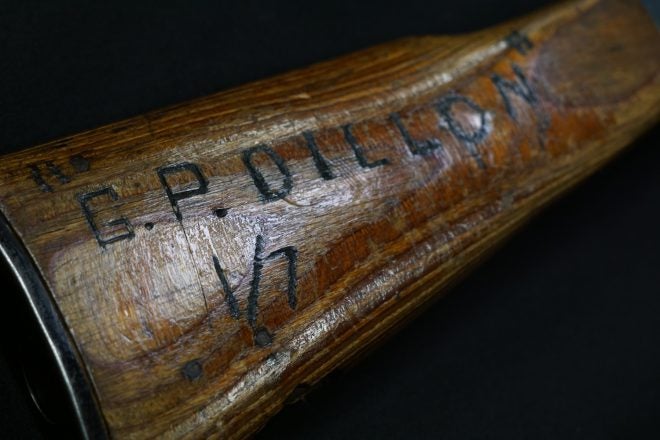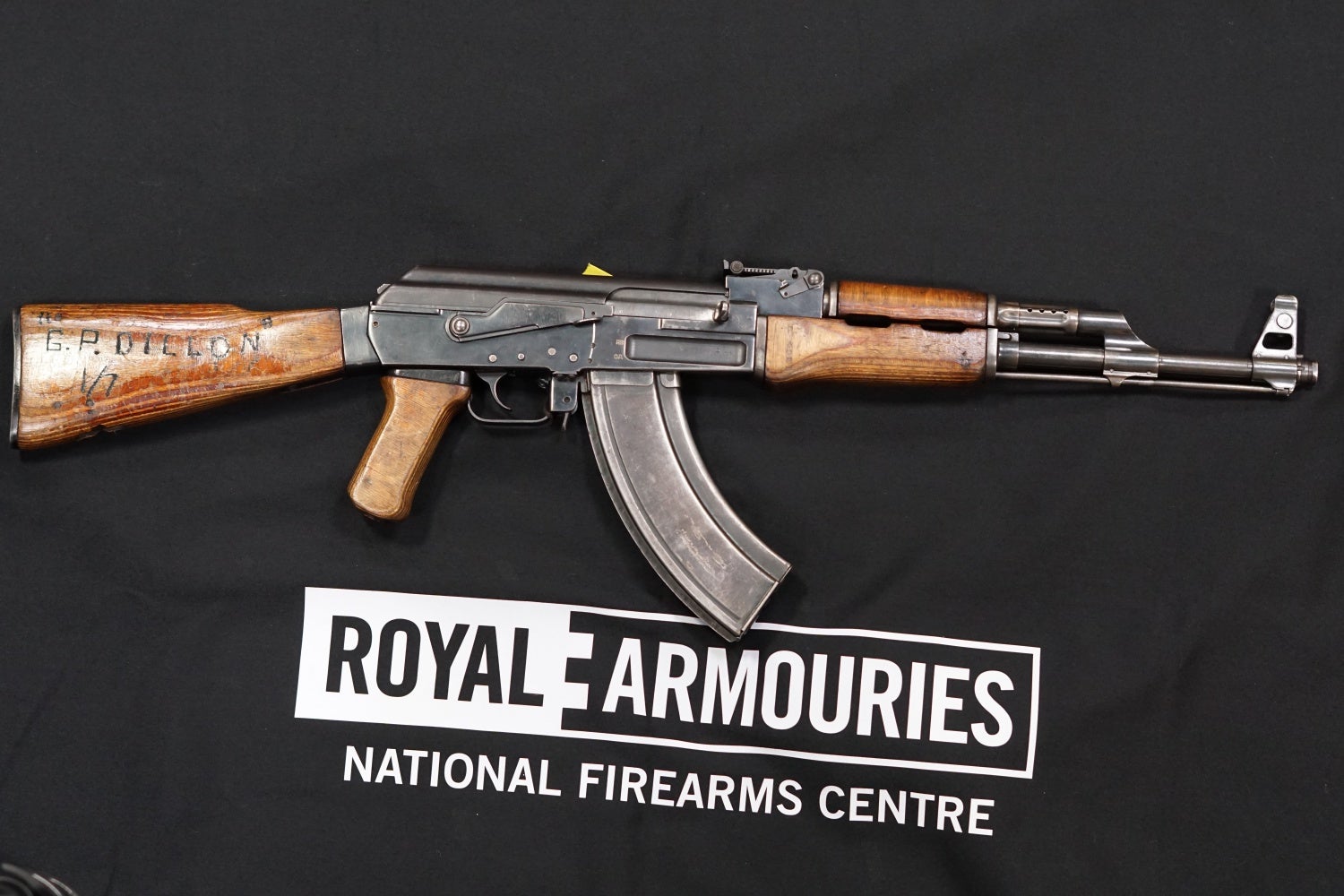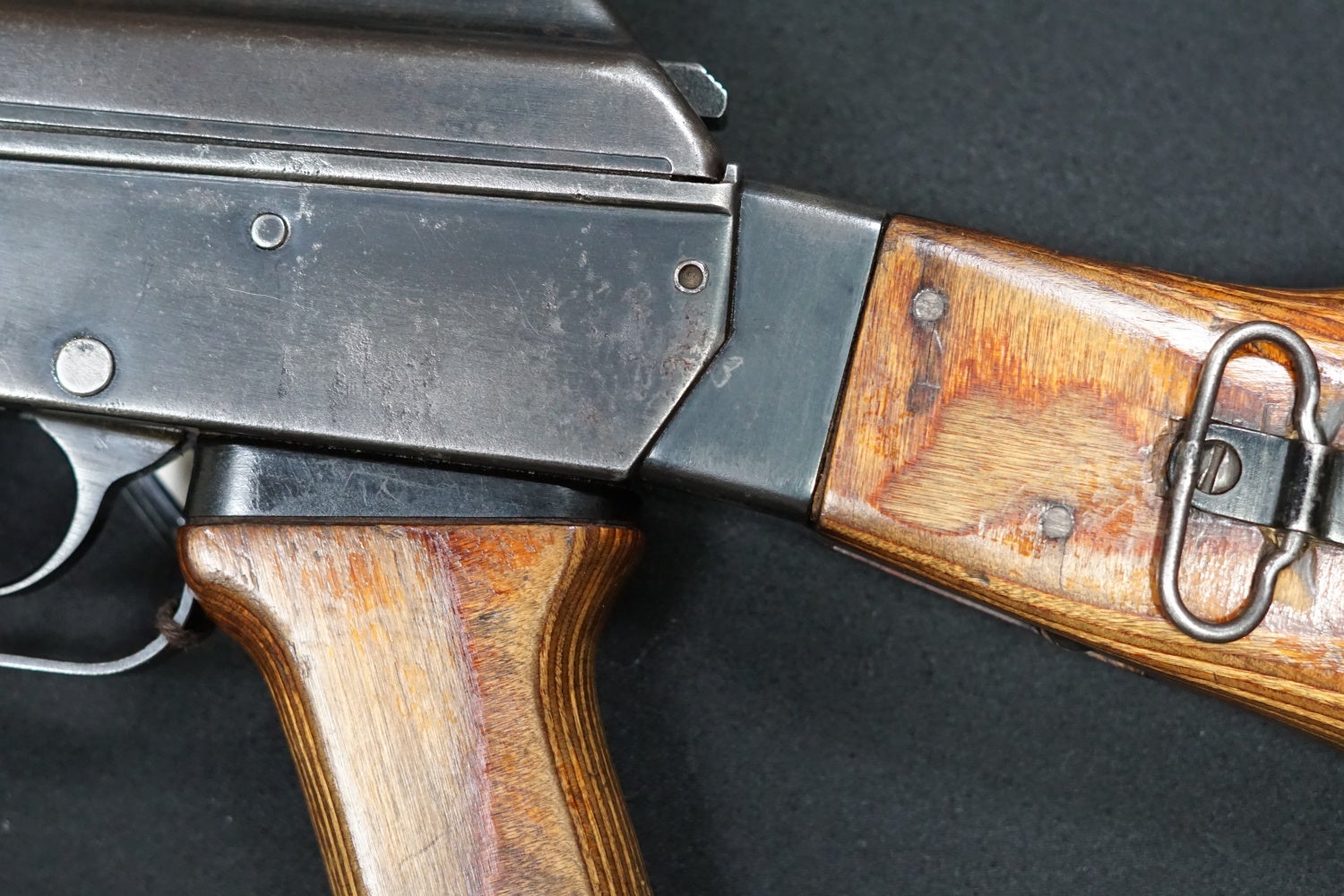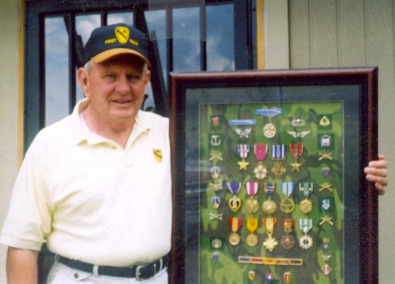From The Battle of la Drang Valley, Cpt. Dillon’s AK47

Within the Leeds based Royal Armouries small arms collection in the United Kingdom there is a particular Soviet AK47 that is kept amongst the collection of other AKs. The serial number is ГЛ4027, in addition to a date stamp of 1953 with an Izhmash arms plant logo. Although the Armouries house a huge collection of Kalashnikovs, this exact one has a rather fascinating history attached to it. The rifle itself is nothing mind blowing, it just being one of several million Kalashnikov pattern rifles produced in the Soviet Union. It has a milled receiver which makes it slightly more interesting than the stamped AKMs that were to replace it in the 1960s, almost being a “Type 2” instead of the earlier Type 1 variant of the early Kalashnikov designs.
What is fascinating about it is the trench art that is featured on the stock. It simply reads “G.P Dillon” and then 1/7 underneath it. The 1/7 reference is to the 1st of the 7th Cavalry. For those history folks out there, you might recognize this of the “We Were Soldiers” fame, with Colonel Hal Moore at the battle of Ia Drang in 1965. This AK47 was captured at the battle of Bong Songfrom an attacking North Vietnamese regular. The name, “G.P Dillon” stands for Gregory P “Matt” Dillon, a retired U.S. Army Colonel. During the battle, Dillon was then a Captain and serving as the Operations Officer for Col. Moore. The role of an Operations Officer is to coordinate the tactical and strategic side of a battlefield. At the regimental level and below this is otherwise known as an S-3, at the division level and above, this is a G-3. Dillon would have been working with the numerous supporting assets to the battalion such as the artillery mentioned above, but he would have also been making sure close air support was being provided as well. While the battalion was in the States, he would have been in charge of training operations, making sure the training schedule was being adhered to and organized.
Some additional information on this capture, from the Royal Armouries-
Whilst clearing enemy bunkers and searching for weapons and intelligence, Dillon found and disarmed the NVA brigade’s executive officer, who was armed with this rifle and a pistol. The pistol was given to Colonel Moore, his battalion commander. Later, all captured AK rifles were ordered handed in to equip a special operation by ARVN troops. Dillon marked the stock of this weapon in order that no-one who had not actually participated in combat could claim to have collected it. He later saw the weapon in a newspaper article about ARVN HQ, where it had presumably been retained.
If you watch the movie, you can see the actor portraying Dillon as calling in artillery from his Huey during the battle. The actor John Hamm plays Dillon in the movie. Dillon is also known for bringing the photographer Joseph Galloway onto the battlefield. From a Stripes article written by Galloway recently–
A young captain hurried past and I recognized him. It was Capt. Matt Dillon, Moore’s operations officer. I grabbed him and told him I needed a ride to the battle. He told me he was taking two Hueys full of ammo to X-Ray as soon as it got dark, but he couldn’t take me unless Moore cleared it. I followed him to a radio tent and listened as he reported to his boss on the nighttime mission. Then he told Moore “that reporter Galloway wants to come along.” Moore’s reply, over the sounds of battle crackling on the radio: “If he’s crazy enough to want to come and you’ve got room, bring him!
More about how the rifle got to the Royal Armouries is available here-
In 1971 the rifle, along with two other examples of the AK, were supplied to British MoD , and from thence to the Pattern Room, finally to the Royal Armouries as part of that collection on gifting in 2005.
Although a visitor to the Royal Armouries cannot see this rifle in person, you can see the entry for the rifle on the Royal Armouries collections website. Some of the information about the rifle is posted online, but the more intricate details were kindly provided by Curator of Firearms Jonathan Ferguson of the National Firearms Centre. Initially, knowledge about this rifle had been unknown at the NFC until a clever intern decided to research the name carved into the stock and found out who Dillon was.
As so far I can gather, Dillon is still alive today, although probably getting on with age at this point. It looks like he is still very involved in veteran’s groups of the 1st Air Cav, apart from everything else that must catch up in retirement.
Can you get in touch with Col. Dillon?
As a sort of a call to action, the National Firearms Centre and TFB would like to know if there are any readers out there who might somehow be in touch with 1st Air Cav veterans associations, or similar groups that Dillon might be a part of today. If so, we would like to get in touch with him over this rifle to let him know where it lies today. My email is listed below, I can forward any results of this call to action to the Royal Armouries NFC as appropriate.




